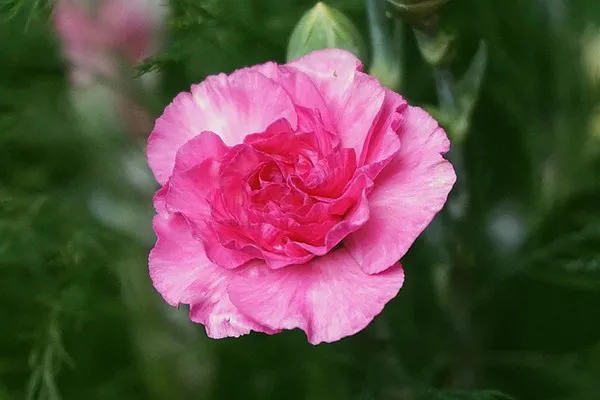Dried flowers are not only beautiful but also carry sentimental value, often reminding us of special occasions or cherished moments. Preserving these delicate blooms allows us to enjoy their beauty for an extended period. Proper storage is key to maintaining their color, shape, and fragrance. In this comprehensive guide, we will explore various techniques and tips to ensure your dried flowers remain vibrant and long-lasting.
Why Dry Flowers?
Drying flowers is a centuries-old practice that serves both aesthetic and sentimental purposes. Here are some compelling reasons to preserve flowers:
Memories: Dried flowers can evoke cherished memories, making them perfect keepsakes from weddings, birthdays, or other significant events.
Year-Round Decor: Dried flowers can be used in home decor throughout the year, adding a touch of nature’s beauty to your living space.
Sustainable: Drying flowers is an eco-friendly way to enjoy their beauty without contributing to waste or carbon footprint.
Cost-Effective: Rather than purchasing fresh flowers frequently, dried flowers offer a cost-effective, long-lasting alternative.
Now, let’s delve into the best practices for storing dried flowers.
Selecting the Right Flowers
Before we discuss storage techniques, it’s essential to choose the right flowers for drying. Not all flowers are suitable for drying, as some retain their shape, color, and fragrance better than others. Here are some popular choices:
Roses: Roses are perhaps the most popular choice for drying due to their stunning appearance and long-lasting nature.
Lavender: Known for its soothing fragrance, lavender dries beautifully and maintains its scent.
Statice: This flower retains its vibrant color even when dried, making it an excellent choice for preserving color in dried arrangements.
Baby’s Breath: With its delicate appearance, baby’s breath adds a touch of elegance to dried bouquets.
Eucalyptus: Eucalyptus leaves dry well and are commonly used in wreaths and other decorative arrangements.
Marigolds: These vibrant flowers maintain their color when dried, making them perfect for adding a pop of orange and yellow to your arrangements.
Preparing Flowers for Drying
Once you’ve chosen your flowers, it’s crucial to prepare them correctly for drying. Follow these steps to ensure the best results:
Harvest at the Right Time: Select flowers for drying when they are at their peak bloom but before they start to wither or fade.
Remove Excess Foliage: Trim away any excess leaves or stems from the flowers, as these can introduce moisture and encourage mold growth during drying.
Bundle or Arrange Neatly: Depending on your preference, you can either bundle the flowers together in small bunches or arrange them in a decorative fashion. Secure them with rubber bands or twine.
Hang Upside Down: To maintain the shape and prevent the flowers from wilting, hang them upside down in a cool, dark, and dry location. This allows the moisture to evaporate gradually, preserving the flowers’ color and shape.
Storage Techniques
Once your flowers are dried, it’s essential to store them properly to ensure their longevity and beauty. Here are some effective storage techniques:
Use Airtight Containers: Airtight containers, such as glass jars or plastic containers with tight-fitting lids, are ideal for storing dried flowers. These containers prevent moisture from seeping in and protect the flowers from dust and insects.
Layer with Tissue Paper: To prevent flowers from sticking together or becoming damaged, layer them between sheets of acid-free tissue paper. This provides an extra barrier against moisture and helps maintain their delicate structure.
Avoid Direct Sunlight: Store your dried flowers in a cool, dark place away from direct sunlight. Exposure to sunlight can cause the colors to fade over time.
Monitor for Moisture: Periodically check your stored dried flowers for any signs of moisture or mold. If you notice any issues, remove the affected flowers immediately to prevent the problem from spreading.
Add Silica Gel Packets: To absorb any residual moisture, consider placing silica gel packets in the storage container with your dried flowers. Ensure the packets do not come into direct contact with the flowers to avoid damaging them.
Label and Date: Don’t forget to label your containers with the type of flowers and the date they were dried. This helps you keep track of their age and ensures you can replace them if necessary.
Reviving Dried Flowers
If you notice that your dried flowers have lost some of their vibrancy over time, don’t worry – you can often revive them with a few simple tricks:
Mist with Water: Lightly mist the dried flowers with water and allow them to absorb the moisture. Be careful not to overdo it, as excessive moisture can damage the petals.
Rehydrate in a Vase: Place the dried flowers in a vase with water and let them sit for a few hours or overnight. This can help plump up the petals and restore some of their original beauty.
Refresh with Fragrance: If your dried flowers have lost their fragrance, consider adding a few drops of essential oil to the container where they are stored. This will infuse them with a pleasant scent.
Conclusion
Preserving the beauty of dried flowers requires careful attention to detail and proper storage techniques. Whether you’re keeping them as sentimental mementos or using them to enhance your home decor, following these guidelines will help ensure that your dried flowers remain vibrant and beautiful for years to come. With the right selection, preparation, and storage, you can enjoy the enduring beauty of these natural treasures and continue to cherish the memories they represent.


